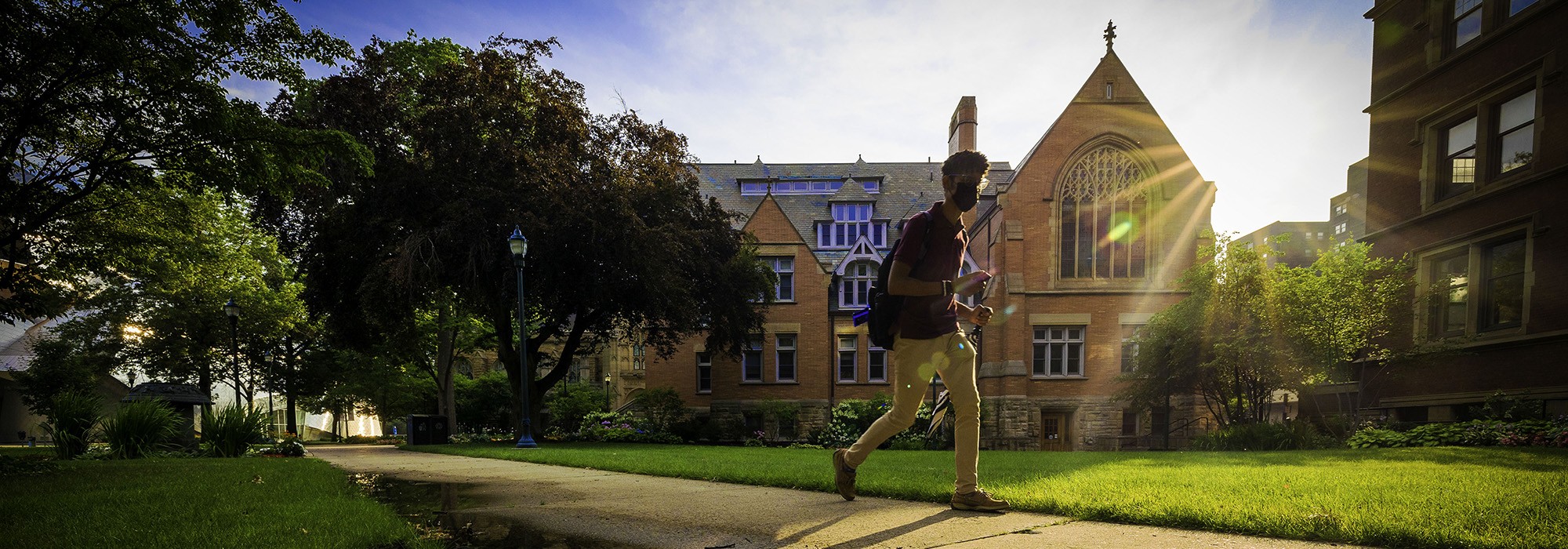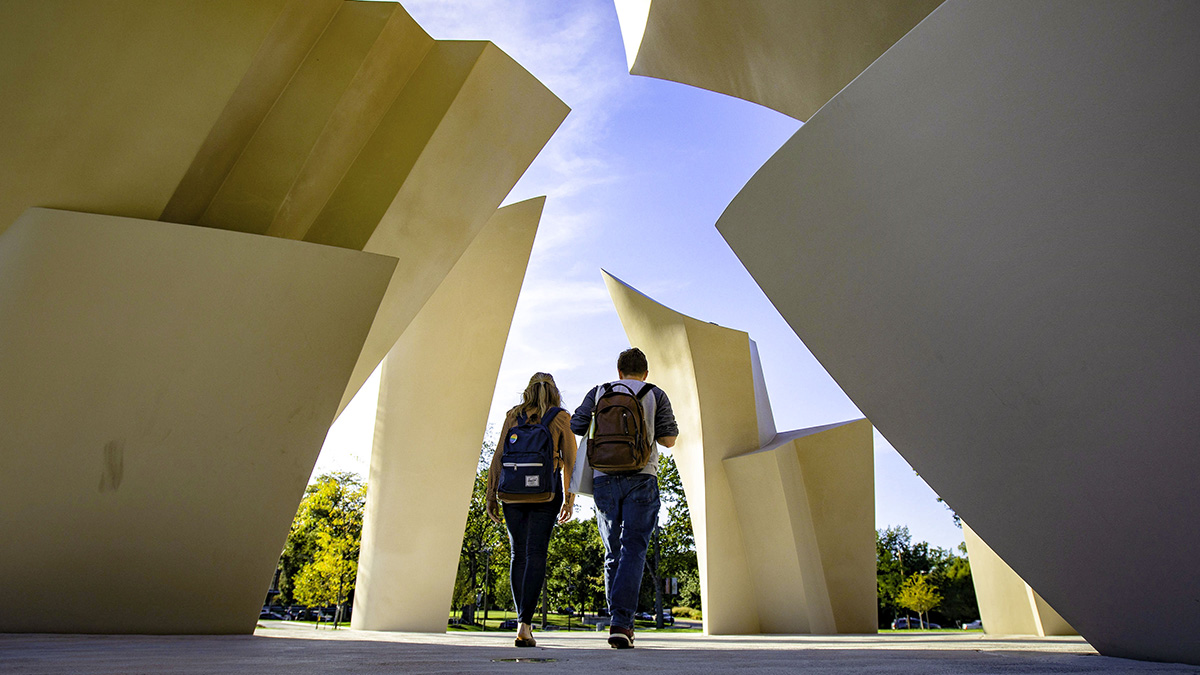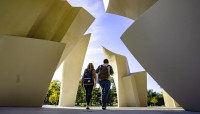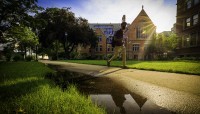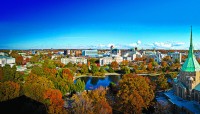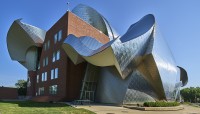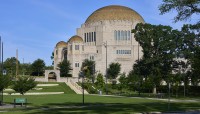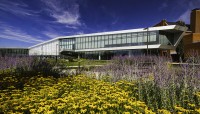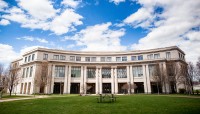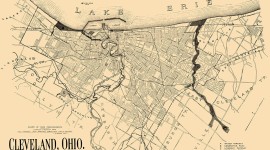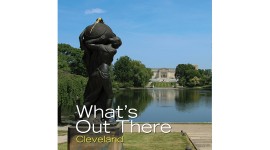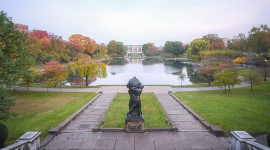Landscape Information
Located five miles east of downtown, this 267-acre campus is situated within Cleveland’s cultural and educational hub, University Circle. In 1882, Western Reserve University moved its campus from Hudson, Ohio, to Euclid Avenue in Cleveland, on land adjacent to the Case School of Applied Sciences. Over the years, the campuses expanded into the University Circle area, with several districts organized by academic focus. In 1967 the separate institutions federated to form Case Western Reserve University (CWRU).
Two relatively flat quadrangle lawns dotted with mature canopy trees anchor the Case Quad, east of Euclid Avenue. Linear pedestrian paths connect with the surrounding academic buildings, many of which were part of the original campuses of the Case School and Western Reserve University. In 1971, the Case Main Building (1885) was razed and replaced by the Michelson-Morley Memorial Fountain, designed by William Behnke (1973). Between Euclid Avenue and Wade Oval, historic buildings that were once part of the Flora Stone Mather College for Women (absorbed by CWRU in 1973) are surrounded by pocket parks, deciduous canopy trees, and contemporary works of art and architecture, including the Frank Gehry-designed Peter B. Lewis Building and the sculptural fountain Merging, by Athena Tacha. The lawn fronting the nearby Kelvin Smith Library was designed by Behnke Landscape Architecture with gently rolling berms as well as ornamental trees and planting beds.
In 2016 Sasaki completed a masterplan for CWRU’s campus intending to improve pedestrian connectivity among campus districts and urban surrounds. Still ongoing, the masterplan was partially completed via the construction of The Nord Family Greenway in 2018, which connects Mather Quad to the emerging West Campus. The 900-foot-long Lucia Nash Smith Walkway, completed in 2020, was designed by landscape architect Virginia Burt in gray asphalt edged with small flowering trees and raised planting beds, as well as nooks furnished with concrete benches and movable seating, to offer pedestrian connections between the Lewis Building and further amenities to the northeast. The Flora Stone Mather College Historic District was listed in the National Register of Historic Places in 1974.



